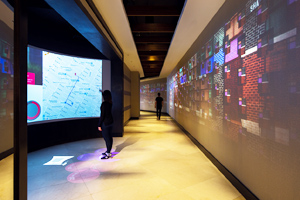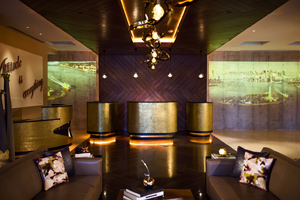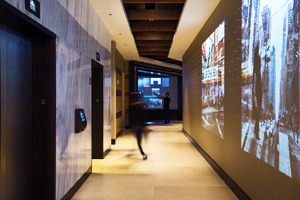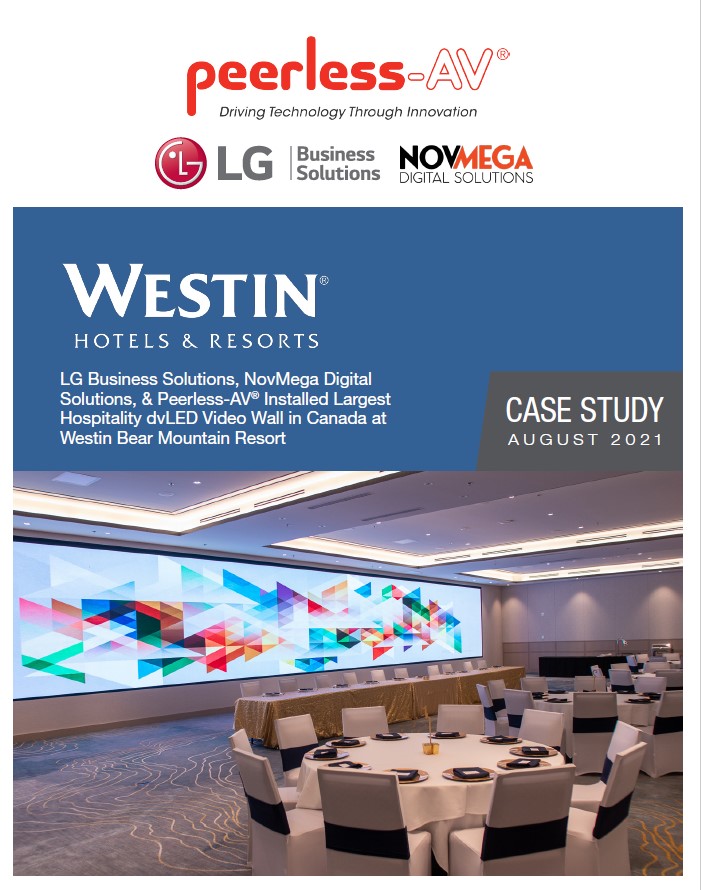Marriott International: Energizing Every Moment of the Customer Journey
Posted on Sep 8, 2017
Marriott International has clearly articulated design strategies for each of the 31 distinct brands in its portfolio. The key principle that drives design for all the brands is the consideration of the full length of the customer journey. For guests,
the brand experience starts long before they walk in the door. For the Global Design Strategies team, digital content and audiovisual experiences can make that journey special, from conceptual design to customer engagement. David Kepron, Vice President, Global Design, explains how virtual reality is integrated into the process of designing a new hotel: “We have a 360-degree viewing environment called Igloo. While you stand in the middle of the 20-foot
 diameter
viewing space, you are wrapped with digital images, sound and even scents, so that you’re no longer trying to get someone to understand what the room environment is like. You’re no longer constrained to a view from a single point in that room.
Now you can move through space and better understand how it all comes together as part of the design and brand narrative.
diameter
viewing space, you are wrapped with digital images, sound and even scents, so that you’re no longer trying to get someone to understand what the room environment is like. You’re no longer constrained to a view from a single point in that room.
Now you can move through space and better understand how it all comes together as part of the design and brand narrative. “That completely changes the way we design and build, because early in the process of design, we’re using these immersive tools to put us in developed places, so we can really begin to look at scale and what people might likely see from a certain vantage point. This is a game changer for us, in both the design of the places and in the representation of those ideas to our owners.”
 Similarly, the overall guest experience is considered, many times starting with a digital connection through an Internet
search, scanning destinations, property photos and surrounding opportunities for excursions. When guests finally arrive on property, their journey is well under way. Kepron notes, “From arrival, to check-in, a ride in an elevator, to the guestroom
and back, we consider signature brand moments and how best to engage our guests at each step along the way. And we ask, where are digital and audiovisual experiences appropriate?”
Similarly, the overall guest experience is considered, many times starting with a digital connection through an Internet
search, scanning destinations, property photos and surrounding opportunities for excursions. When guests finally arrive on property, their journey is well under way. Kepron notes, “From arrival, to check-in, a ride in an elevator, to the guestroom
and back, we consider signature brand moments and how best to engage our guests at each step along the way. And we ask, where are digital and audiovisual experiences appropriate?” As an example of a fully realized vision, he cites the entry experience at Marriott’s Renaissance New York Midtown
Hotel, already described in the opening of this report. “Architecture, design, materials, finishes and furniture make up the physical environment. The digital pieces and the audiovisual overlay must be integrated into the overall design thinking.
It is an intricate dance between the brand’s expression in the physical environment and how interactive digital media plays a role in enhancing experiences. At one point of interaction, mobile check-in may be the tool. At another location, it may
be large-scale digital projections.”
As an example of a fully realized vision, he cites the entry experience at Marriott’s Renaissance New York Midtown
Hotel, already described in the opening of this report. “Architecture, design, materials, finishes and furniture make up the physical environment. The digital pieces and the audiovisual overlay must be integrated into the overall design thinking.
It is an intricate dance between the brand’s expression in the physical environment and how interactive digital media plays a role in enhancing experiences. At one point of interaction, mobile check-in may be the tool. At another location, it may
be large-scale digital projections.” With dozens of brands and thousands of locations, the goal is always the same: to engage the senses, to trigger emotions and to foster lasting positive memories. And the question is always, at this point in time and space, will the introduction of digital content improve the experience of our guests?
As part of Marriott’s constant push for innovation, they continue to study things like digitally immersive environments, the Internet of Things, adaptive interfaces and the neuroscience of customer engagement in digital world, one of Kepron’s areas of expertise. Looking ahead, he believes that “the influence of a digitally mediated culture on an emerging generation of guests will result in vastly different expectations about their relationships with the brands they love and how experiences should unfold in a digital future. Providing digitally immersive audiovisual environments can engage and empower guests in making hotel stays more relevant and memorable.”






